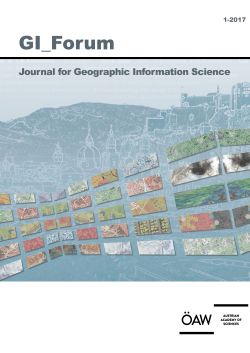
GI_Forum 2017, Volume 5, Issue 1, pp. 114-125, 2017/06/30
Journal for Geographic Information Science

This paper presents a novel method to partition urban space with respect to its mobility network rather than abstract administrative boundaries or simple grids. The main goal of our method is to support mobility infrastructure planning and optimization in an urban environment. To this end, our tessellation, which is based on constrained Voronoi tessellation, generates cells that are compact and centred around street intersections. Furthermore, it takes into account unsuitable areas and barriers that obstruct movement through urban space. The resulting cells are fine-grained planning units that reflect the characteristics of the underlying mobility network. Potential applications include demand modelling, location planning and optimization for bicycle- and car-sharing systems, or public transport stops.
Keywords: Tessellation, street network, constrained Voronoi diagram, mobility infrastructure planning